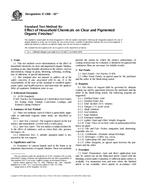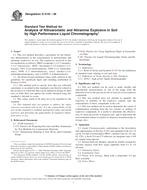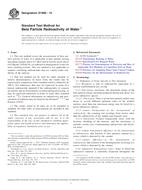1.1 These test methods cover the following three types of methods for the determination of ozone content in laboratory test chambers. Method A (UV absorption) is specified for reference or referee purposes and as a means of calibration for the alternative methods; Method B, instrumental device (electrochemical or chemiluminescence); and Method C, wet chemical techniques (see Appendix X1). These methods are primarily intended for use with tests for determining rubber ozone cracking resistance and thus are applicable over the ozone level range from 25 to 200 mPa.
Note 1 – Prior to 1978, ozone concentrations were expressed in ASTM D11 Standards in parts per hundred million (pphm) of air by volume. See Appendix X2 for an explanation of the change to partial pressure in millipascals (mPa).
1.2 The values stated in SI units are to be regarded as standard. No other units of measurement are included in this standard.
1.3 This standard does not purport to address all of the safety concerns, if any, associated with its use. It is the responsibility of the user of this standard to establish appropriate safety and health practices and determine the applicability of regulatory limitations prior to use. For a specific hazard statement, see Note 2 and 5.1.
Note 2 – Warning–Ozone is a hazardous chemical.
Product Details
- Published:
- 07/01/2009
- Number of Pages:
- 10
- File Size:
- 1 file , 160 KB
- Redline File Size:
- 2 files , 290 KB


